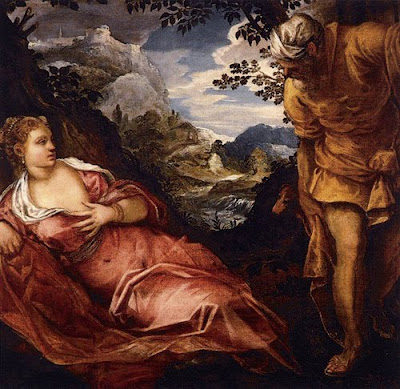There are various evil women in the Bible, above all Delilah and Salome. But without any doubt the worst of all is Jezebel. Delilah destroyed Samson, but finally could be conceded that she served her own people. Even Salome followed more the instructions of her mother than her own motivations. But most notably Jezebel destroyed not only one man, she attacked the Jewish religion itself.
Jezebel was a Phoenician princess and married Ahab the King of Israel (which was in this time divided in two Kingdoms). She gained great influence with Ahab so that he converted to the religion of the Phoenician god Baal.
Temples of Baal were opened in Israel and it is said that Jezebel fostered there a cult of sexual permissiveness. Priest of Yahweh were persecuted and often killed.
After Ahab's death, Jezebel controlled the kingdom with the help of her sons, first Ahaziah and then Jehoram. At least the prophet Elisha proclaimed Jehu king of Israel, who killed Jehoram and then entered the palace of Jezebel. He ordered that she was thrown out of the window. Her dead body was left in the street to be eaten by dogs.
Later Jezebel’s name became a synonym for worshipping false gods, sexual immorality, manipulation, seduction and not at least promiscuity.
But different from others like Delilah or Salome she never became very popular in art. Maybe because she was too evil. There are some paintings, mostly depicting her cruel death, but nothing to compare with the popularity of Salome.
This changed in the 20th century when the promiscuous fame proved to be helpful in selling books and movies.

Here a paperback cover from 1963 by the famous pulp artist Robert McGinnis (born 1926). It demonstrates perfectly why Jezebel became so popular in more recent times.
 With all the lascivious exotic women this is more an oriental than a biblical painting. Debat-Ponsan did also some oriental harem-paintings and stayed here near this popular subject.
With all the lascivious exotic women this is more an oriental than a biblical painting. Debat-Ponsan did also some oriental harem-paintings and stayed here near this popular subject.


































.jpg)












